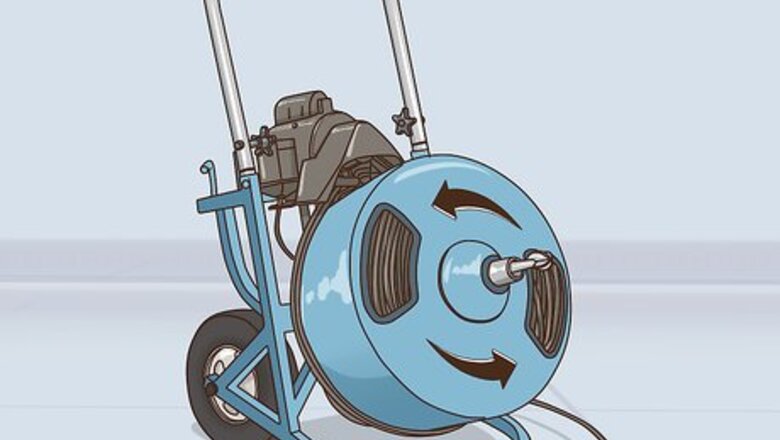
views
Unclogging a French Drain
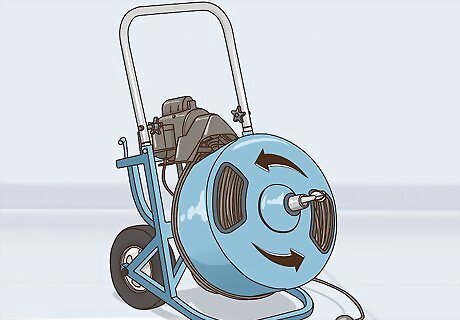
Rent an electric sewer snake. To clean your French drain, rent an electric sewer snake (or auger), a motor-powered spool of cable with a two-pronged cutter at its tip. Call two or three rental locations (e.g. hardware stores, equipment rental stores) to compare prices, which should be around $65 or more for a half day rental. Choose between a 50-foot and 100-foot model (depending on the length of your french drains), and opt for a machine with ⁄4 inch (1.9 cm) cable.
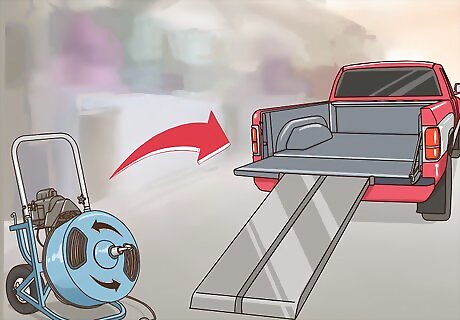
Prepare for heavy lifting. If you don't drive a truck, van, or SUV, borrow one or ask a friend for a lift with the auger, which is too heavy to be put into a car trunk. Ask a rental store employee to help you lift the machine into the vehicle, and enlist the help of a family member, friend, or neighbor to move it once you get home. If you are moving the snake on your own, use a ramp to ease it out of the vehicle. Most augers have two wheels on their frame, allowing you to move them easily once they are on the ground.
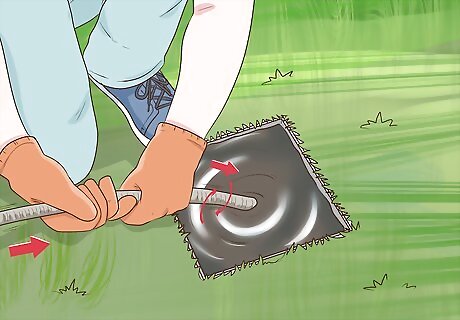
Feed the cable into the drain. Uncover the entrance of the French drain. If your french drain is connected to a gutter downspout, detach the downspout to continue. Turn on the auger and slowly feed the cable in. To protect your hands, wear thick gloves while handling the cable.
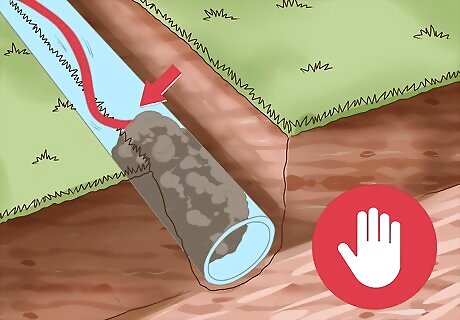
Stop when you feel resistance. When the cable meets resistance (indicating that it has reached a clog, or has come to a turn in the pipe) stop feeding it into the drain and retract it just enough to free the cutter. Slowly ease it forward once again. Either the cable will find its way around a bend, or a blockage will cause it to turn, allowing the cutter end to work through the obstruction. You may need to wiggle the cable and gently move it back and forth to get it around a bend.
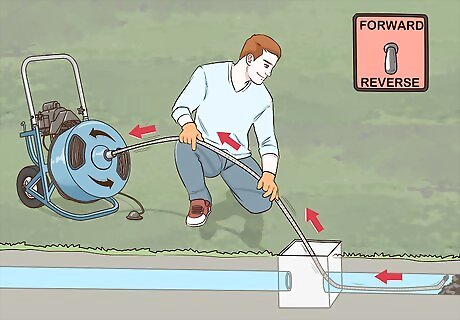
Remove the cable entirely if you encounter large clogs. If the cable encounters a large clog that it cannot clear, remove it entirely by pulling it gently and using the reverse switch on the snake motor (if necessary). Wipe down the cable with a wet rag as it recoils to remove build up. Once the cable is out entirely, turn off the machine and remove debris (e.g. pieces of tree root, leaves) from the cutter.
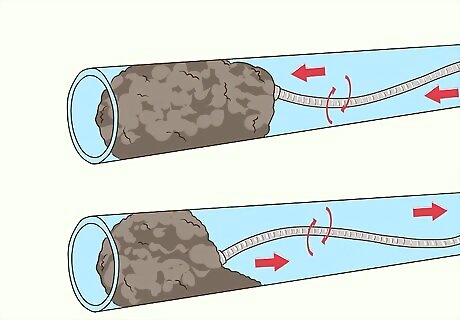
Repeat the process until the drain is clear. Repeat the process of feeding the cable into the drain until all obstructions are cleared. If large blockages are worked through, you may hear built-up water rush out of the pipe, as well as other debris. Going through the process at least two or three times is normal to be able to adequately unclog and clear a french drain.
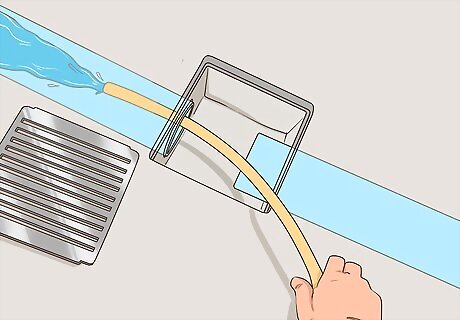
Hose out the drain. After snaking with the auger, feed a garden hose into the drain and turn it on. Allow the water to flush out extra debris. For added cleaning, insert the hose into the drain at the same time as the auger to clean off the cable while doing 1 last snaking. Run the water for 5 minutes, or until it is clear. If you have a pressure washer, use it to flush out the drain.
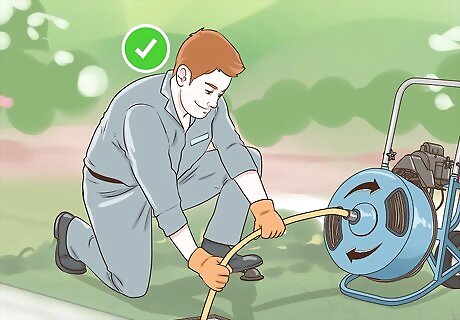
Call a professional. If you can't clear out a clog in the drain after several attempts, contact a professional drain cleaning service to avoid harming your pipes with the auger. Look up several options for service (online, or in local listings) to compare prices and availability. Note that prices may vary, but standard drain cleanings generally cost upwards of $250 per visit.
Maintaining a French Drain
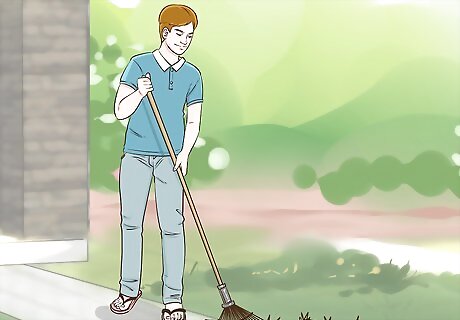
Clean your French drain regularly. Regular cleaning of your French drain is necessary to prevent a buildup of dirt and debris that could cause a clog. Every week or so, use a garden rake to clear the surface of the drain to remove any debris that could obstruct water flow. In the event of a storm, nearby construction, or another occurrence that may result in excess debris, clear the area as soon as possible to prevent backup. If your drain has louvers, be sure to remove the cover and clean the inside of the drain and each louver slot.
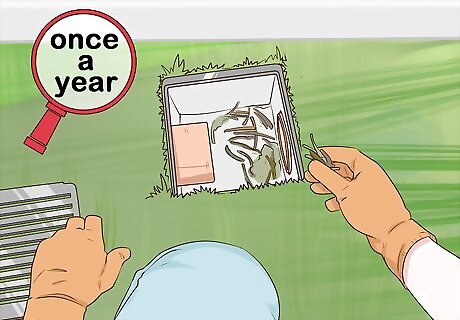
Inspect your French drain yearly. While French drains can operate for years without issues, they should be inspected once a year to ensure that there are no blockages present. Choose a time of year when your schedule will accommodate this task and when the weather facilitates it (e.g. during the summer, when you are on vacation and there is no snow or excessive rain). Schedule the inspection before beginning any other projects in the surrounding area (e.g. planting a garden or building a deck) in case you have to conduct repairs. If you have a heavy rain, inspect your drain system to make sure it is still draining fast or if it has built-up.
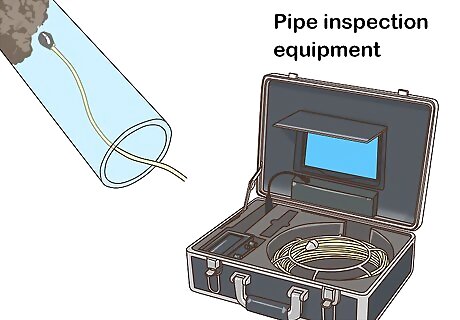
Rent pipe inspection equipment. Call several hardware stores or equipment rental locations to compare rental prices for pipe inspection equipment. These small, cable-mounted video cameras coil into the drain and transmit recorded images to a video monitor, revealing obstructions, collapsed pipes, or other issues. Models range in features, quality, and availability, so costs may vary significantly depending on your location and needs. A less expensive model should be adequate for identifying a simple clog or damage.
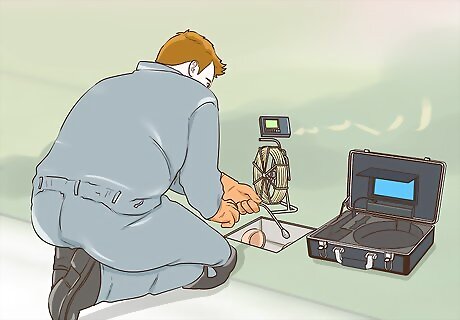
Get a professional inspection. If your own inspection of your French drain is fruitless, or if you want to be certain about the condition of your drain, call a professional drain specialist. Experts can check your drains quickly and effectively, and tell you definitively if there are any problems that could cause leakage, flooding, or damage. Drain specialists can also handle cleaning or repairs if they are revealed to be necessary.




















Comments
0 comment